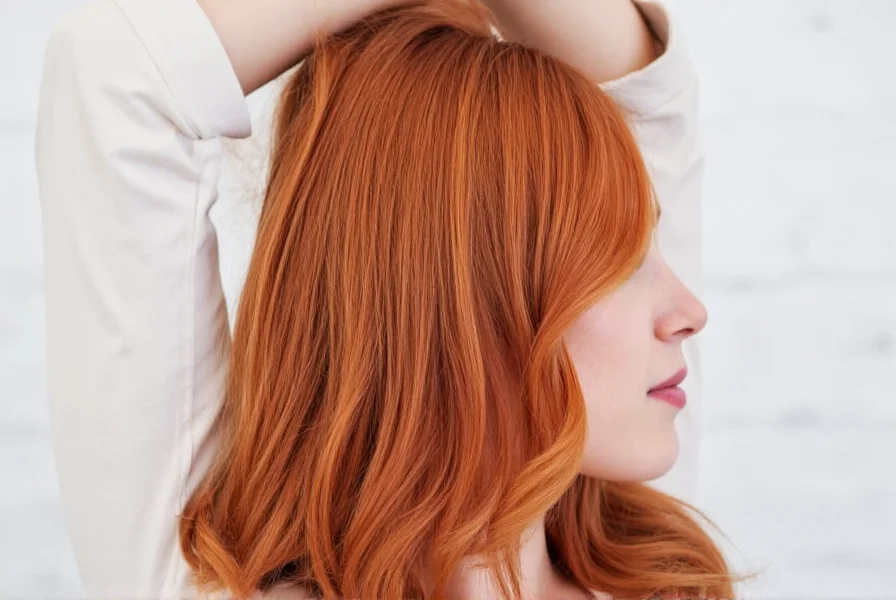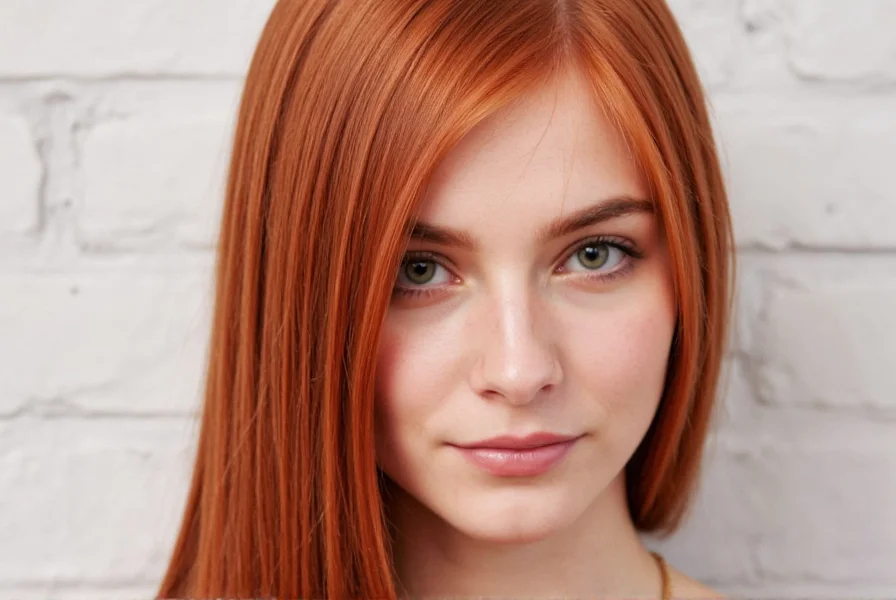Light ginger hair color is a pale copper-red shade with golden undertones, lighter than traditional ginger but warmer than strawberry blonde. This vibrant yet subtle hue typically falls between level 6-7 on the hair color chart and works best with fair to light-medium skin tones, especially those with cool or neutral undertones.
Understanding Light Ginger Hair Color
Light ginger represents one of the most sought-after variations within the red hair spectrum. Unlike fiery reds or deep auburns, light ginger maintains the characteristic coppery warmth while appearing significantly softer and more natural. Professional colorists describe it as a level 6-7 shade (dark blonde to medium blonde base) with intense copper-red pigments.
What distinguishes light ginger from similar tones? While regular ginger tends toward orange-red intensity, light ginger incorporates more golden highlights and reduced pigment density. This creates a sun-kissed effect that appears less artificial and more dimensional. Many people confuse light ginger with strawberry blonde, but the key difference lies in the base: strawberry blonde has a blonde foundation with red accents, while light ginger has a distinctly red foundation with lighter saturation.

Who Suits Light Ginger Hair Best?
Light ginger hair color particularly complements certain complexions while potentially clashing with others. Understanding your skin's undertone is crucial when considering this shade.
| Skin Undertone | Recommended? | Why It Works |
|---|---|---|
| Cool (pink/blue veins) | ✓ Excellent match | Creates striking contrast while the golden undertones prevent harshness |
| Neutral | ✓ Very good match | Adapts well to both warm and cool elements in neutral complexions |
| Warm (green veins) | △ Possible with adjustment | May appear muddy; requires golden-infused formulations to prevent orange cast |
| Deep/Dark | △ Challenging | Often lacks sufficient contrast; consider richer red variations instead |
For those with fair skin and light ginger hair color for fair skin tones, this combination creates an ethereal, almost porcelain effect. People with medium skin tones can successfully wear light ginger but often benefit from slightly deeper variations that provide more contrast. Those with naturally light hair (blonde or light brown) typically achieve the most seamless transition to light ginger.
Achieving the Perfect Light Ginger Shade
Whether you're a natural redhead enhancing your color or transitioning from another shade, achieving authentic light ginger requires careful formulation. Professional colorists emphasize that light ginger hair color level selection depends on your starting point:
- Natural blondes (levels 6-8): Can often achieve light ginger with a single process using 20-volume developer
- Light to medium brunettes (levels 4-6): Typically require pre-lightening to level 7 before applying ginger tones
- Dark brunettes or base reds: Need significant lightening, which may compromise hair integrity
The most common mistake when attempting light ginger hair color at home is selecting formulations that are too orange. Look for professional lines specifying "copper-gold" or "golden-red" rather than "orange-red" bases. Brands like Wella Color Charm (4R or 5R with 10% golden enhancer) or Redken Shades EQ (2RR or 4RR with conditioning gloss) provide excellent starting points.
Maintenance Essentials for Light Ginger Hair
Red pigments fade faster than other colors, making maintenance crucial for light ginger hair color maintenance. Implement these strategies to preserve your vibrant hue:
- Use color-depositing products: Incorporate a weekly copper-infused shampoo like Christophe Robin Ginger Hair Polish to refresh tones
- Cold water rinses: Hot water opens cuticles and accelerates fading
- UV protection: Apply leave-in treatments with UV filters before sun exposure
- Professional gloss treatments: Schedule every 4-6 weeks to restore shine and tone
- Color-safe regimen: Avoid sulfates that strip pigments
When light ginger hair begins to fade, it often shifts toward an unwanted orange or brassy tone rather than fading to blonde. Counteract this by using purple-based shampoos sparingly (once weekly) to neutralize brassiness without eliminating the desirable copper tones. For severe fading, a professional demi-permanent gloss using a 6RC (red copper) base can revive the color without further damage.
Light Ginger vs. Similar Red Tones
Understanding the subtle differences between red variations prevents disappointment with your color results. Light ginger occupies a specific niche within the red spectrum:
- Light ginger vs copper hair color: Copper contains more intense orange pigments and appears brighter, while light ginger has softer golden-red tones
- Light ginger vs strawberry blonde: Strawberry blonde has a blonde base with red accents; light ginger has a red base with lighter saturation
- Light ginger vs auburn: Auburn features deeper, cooler red-brown tones while light ginger remains distinctly coppery and brighter
When selecting your ideal shade, consider that light ginger works particularly well for creating dimension in balayage or ombré techniques. The golden undertones blend seamlessly with natural highlights, making it a popular choice for sun-kissed effects that appear organic rather than artificially colored.
Addressing Common Light Ginger Challenges
Even with proper application, light ginger hair sometimes presents unique challenges that require specific solutions:
Problem: Orange cast after fading
Solution: Use a violet-blue toning shampoo once weekly to neutralize brassiness while preserving red tones. Avoid overusing purple products which can create muddy results.
Problem: Uneven application on previously colored hair
Solution: Consult a professional for a color melt technique that blends transitions rather than creating harsh lines between shades.
Problem: Rapid fading on porous hair
Solution: Implement a bond-building treatment regimen before coloring to strengthen hair cuticles and improve pigment retention.
For those with naturally light ginger hair color, maintaining the vibrancy without artificial color requires similar strategies: cold water rinses, UV protection, and occasional color-depositing conditioners to enhance natural tones that may fade with sun exposure.











 浙公网安备
33010002000092号
浙公网安备
33010002000092号 浙B2-20120091-4
浙B2-20120091-4